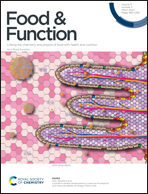 “Cannabis has been used to relieve the symptoms of disease for thousands of years. However, social and political biases have limited effective interrogation of the potential benefits of cannabis and polarised public opinion.
“Cannabis has been used to relieve the symptoms of disease for thousands of years. However, social and political biases have limited effective interrogation of the potential benefits of cannabis and polarised public opinion.
Evidence is emerging for the therapeutic benefits of cannabis in the treatment of neurological and neurodegenerative diseases, with potential efficacy as an analgesic and antiemetic for the management of cancer-related pain and treatment-related nausea and vomiting, respectively.
An increasing number of preclinical studies have established that ∆9-THC can inhibit the growth and proliferation of cancerous cells through the modulation of cannabinoid receptors (CB1R and CB2R), but clinical confirmation remains lacking.
In parallel, the anti-cancer properties of non-THC cannabinoids, such as cannabidiol (CBD), are linked to the modulation of non-CB1R/CB2R G-protein-coupled receptors, neurotransmitter receptors, and ligand-regulated transcription factors, which together modulate oncogenic signalling and redox homeostasis.
Additional evidence has also demonstrated the anti-inflammatory properties of cannabinoids, and this may prove relevant in the context of peritumoural oedema and the tumour immune microenvironment. This review aims to document the emerging mechanisms of anti-cancer actions of non-THC cannabinoids.”

 “The growing concern on the antibiotic resistance spreading among bacteria has stimulated the search for valuable alternatives from plant sources.
“The growing concern on the antibiotic resistance spreading among bacteria has stimulated the search for valuable alternatives from plant sources.
 “Hempseed (Cannabis sativa L.) has beneficial impact on human health mainly because of its wide variability of bioactive compounds. However, many of them are not fully characterized yet. In this work, hempseed was defatted and through a bio-guided studied, two fractions (F03 and F05) with the highest content of phenols, flavonoids and antioxidant capacity were selected. Fractions were chemically analyzed by UHPLC HRMS/MS. The anti-inflammatory capacities of these compounds were evaluated on human monocytes using flow cytometry, RT-qPCR and Elisa procedures. A high amount of phenolic compounds were identified, with the major compound being: N-trans-caffeoyltyramine (6.36 mg g-1 in F05 and 1.28 mg g-1 in F03). Both, F03 and F05 significantly reduced the inflammatory competence of LPS-treated human primary monocytes, decreasing TNF-α and IL-6 gene expression and secretion. These findings indicate that in the defatted fraction of the hempseed there are a wide number of compounds with beneficial potential to prevent and treat inflammatory disorders, as well as other processes caused by oxidative stress.”
“Hempseed (Cannabis sativa L.) has beneficial impact on human health mainly because of its wide variability of bioactive compounds. However, many of them are not fully characterized yet. In this work, hempseed was defatted and through a bio-guided studied, two fractions (F03 and F05) with the highest content of phenols, flavonoids and antioxidant capacity were selected. Fractions were chemically analyzed by UHPLC HRMS/MS. The anti-inflammatory capacities of these compounds were evaluated on human monocytes using flow cytometry, RT-qPCR and Elisa procedures. A high amount of phenolic compounds were identified, with the major compound being: N-trans-caffeoyltyramine (6.36 mg g-1 in F05 and 1.28 mg g-1 in F03). Both, F03 and F05 significantly reduced the inflammatory competence of LPS-treated human primary monocytes, decreasing TNF-α and IL-6 gene expression and secretion. These findings indicate that in the defatted fraction of the hempseed there are a wide number of compounds with beneficial potential to prevent and treat inflammatory disorders, as well as other processes caused by oxidative stress.” “Hemp (Cannabis sativa L.) has become widely used in several sectors due to the presence of various bioactive compounds such as terpenes and
“Hemp (Cannabis sativa L.) has become widely used in several sectors due to the presence of various bioactive compounds such as terpenes and  “Cannabis use in the management of musculoskeletal diseases has gained advocacy since several states have legalized its recreational use.
“Cannabis use in the management of musculoskeletal diseases has gained advocacy since several states have legalized its recreational use. “This preliminary study examines whether daily CBD dose of 15-25 mg/kg produces cerebral macrostructure changes and, if present, how they relate to changes in seizure frequency.
“This preliminary study examines whether daily CBD dose of 15-25 mg/kg produces cerebral macrostructure changes and, if present, how they relate to changes in seizure frequency. “Cannabis Indica Speeds up Recovery from Coronavirus Severe acute respiratory syndrome (SARS) is a viral respiratory disease caused by the SARS coronavirus (SARS-CoV).
“Cannabis Indica Speeds up Recovery from Coronavirus Severe acute respiratory syndrome (SARS) is a viral respiratory disease caused by the SARS coronavirus (SARS-CoV). “Recent studies have suggested that cannabidiol (CBD) could interconvert into Delta-8- and Delta-9- tetrahydrocannabinol. Thus, we tested the plasma samples of 120 healthy human subjects (60 male and 60 female), 60 in fasting and the other 60 under normal feeding conditions after acute administration of an oral solution containing CBD 300 mg.
“Recent studies have suggested that cannabidiol (CBD) could interconvert into Delta-8- and Delta-9- tetrahydrocannabinol. Thus, we tested the plasma samples of 120 healthy human subjects (60 male and 60 female), 60 in fasting and the other 60 under normal feeding conditions after acute administration of an oral solution containing CBD 300 mg. “Dravet syndrome is a severe, genetic form of paediatric epilepsy associated with premature mortality and co-morbidities such as anxiety, depression, autism, motor dysfunction and memory deficits.
“Dravet syndrome is a severe, genetic form of paediatric epilepsy associated with premature mortality and co-morbidities such as anxiety, depression, autism, motor dysfunction and memory deficits.  “Advances in the development of drugs with novel mechanisms of action have not been sufficient to significantly reduce the percentage of patients presenting drug-resistant epilepsy. This lack of satisfactory clinical results has led to the search for more effective treatment alternatives with new mechanisms of action.
“Advances in the development of drugs with novel mechanisms of action have not been sufficient to significantly reduce the percentage of patients presenting drug-resistant epilepsy. This lack of satisfactory clinical results has led to the search for more effective treatment alternatives with new mechanisms of action.